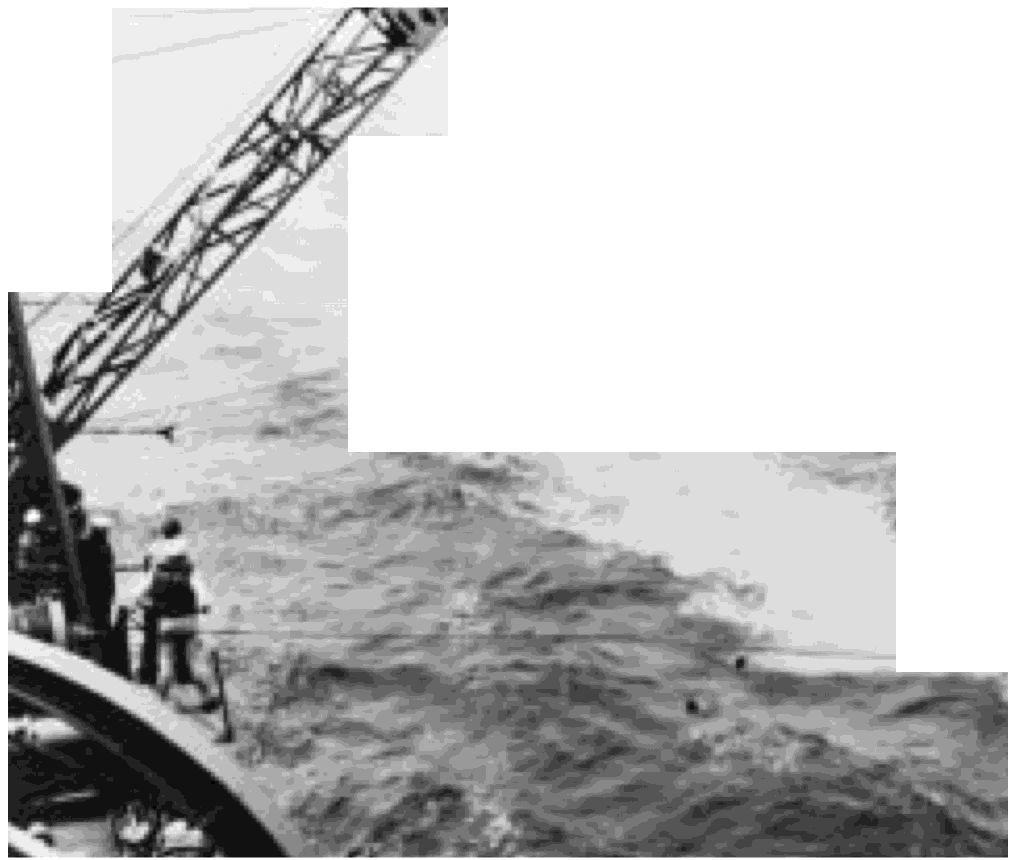
138
UNITED STATES NAVAL AVIATION
1910-1995
1944-Contin ued
29 April-1 May
Second Carrier Strike on Truk-
Task Force 58 (Vice Admiral Marc A. Mitscher), return-
ing to Majuro from the Hollandia operation, launched
a 2-day attack on enemy installations and supply
dumps at Truk. In addition to damage ashore, three
small ships were sunk and 145 enemy aircraft
destroyed. Task Group 58.1 (Rear Admiral Joseph 1.
Clark), detached from the main force on the second
day, flew protective cover for a cruiser bombardment
of Satawan, and on 1 May supported bombardment of
Ponape with air cover and bombing and strafing
attacks.
1 May
The command Aircraft, Central Pacific, was
dissolved and its functions assumed by Commander,
Marshalls Sub-Area.
4 May
A board headed by Rear Admiral Arthur W.
Radford and known by his name, submitted a report
that had a direct effect on aviation planning during the
latter part of the war and, with modifications to fit the
needs of peacetime, extended its influence long after
the war. The Integrated Aeronautic Program for
Maintenance, Material and Supply, which evolved
from its recommendations, was essentially a plan
involving the assignment of new planes to combat
units; return of aircraft to the United States for recon-
ditioning and reassignment after specified combat
tours; the retirement of second tour aircraft before
maintenance became costly; and the support of the
aeronautical organization through the use of factors
and allowances for pools, pipelines, and recondition-
ing kept realistic by frequent appraisal.
8 May
The seaplane tender
Kenneth Whiting,
first of
four ships of the class, was commissioned at Tacoma,
Wash., Commander Raymond R. Lyons in command.
8 May
Commander, Naval Forces, Northwest African
Waters, approved the assignment of nine Naval
Aviators from Cruiser Scouting Squadron 8 (VCS-8) to
the 111 th Tactical Reconnaissance Squadron (TRS) of
the 12th Army Air Force for flight training and combat
operations in North American P-51 C Mustangs.
Previous combat experience with Curtiss SOC Seagulls
and Vought OS2U Kingfishers being used in air spot-
ting and reconnaissance missions proved both types
were vulnerable to enemy fighters and antiaircraft fire.
The higher performance of fighters such as the P-51
was expected to result in a reduction of casualties on
these missions. A total of 11 Naval Aviators participat-
ed in combat operations from the cockpits of P-51 s
while assigned to the 111th TRS in support of the cam-
paign in Italy and the invasion of southern France. On
2 September 1944 all Naval Aviators assigned to the
III th returned to their ships, ending a four month
long association between the 111 th TRS and VCS-8.
13 May
To distinguish between fixed and rotary
wing heavier-than-air craft, the helicopter class desig-
nation VH plus a mission letter (i.e. VHO for observa-
tion and VHN for training) was abolished and heli-
copters were established as a separate type designated
H. The previous mission letters thus became classes
designated 0, N, and R for observation, training and
transport respectively.
13 May
To meet the needs of the fleet for aviation
personnel trained in the use of electronics counter-
measures equipment, the Chief of Naval Operations
directed that on 1 June, or as soon thereafter as prac-
ticable, the Chief of Naval Air Technical Training
establish a school to be known as Special Projects
School for Air, located initially at NAAS San Clemente
Island, Calif.
15 May
The first of 16 special transatlantic flights
was made by NATS aircraft to the United Kingdom to
deliver 165,000 pounds of minesweeping gear essen-
tial to the safety of assault shipping during the
Normandy invasion. The delivery was successfully
completed 23 May.
17 May
The Bureau of Aeronautics authorized
CGAS Floyd Bennett Field, N.Y., to collaborate with
the Sperry Gyroscope Company in making an auto-
matic pilot installation in a HNS-1 helicopter.
--
J
_ !I"'L..I'
T ..-
"
Xl.
I
1
--
An OS2U Kingfisher
is
taxied onto the plane net for an underway
recoveq by
a
cruiser 299540
 |
38 |
 |